JDS Labs is tremendously pleased to present Atom DAC+, an immediate successor to Atom DAC. Designed from start to finish on our new Audio Precision APx555 analyzer, Atom DAC+ came together as a contingency plan following the recent AKM factory disaster.
We know many of you will appreciate the improvements Atom DAC+ brings: USB and optical inputs, silent transitions when resuming from auto standby, even higher performance, standard support for UAC2 with UAC1 fallback*, and alternative firmware which lets you experiment with a tube-like sound. Atom DAC+ ships today. 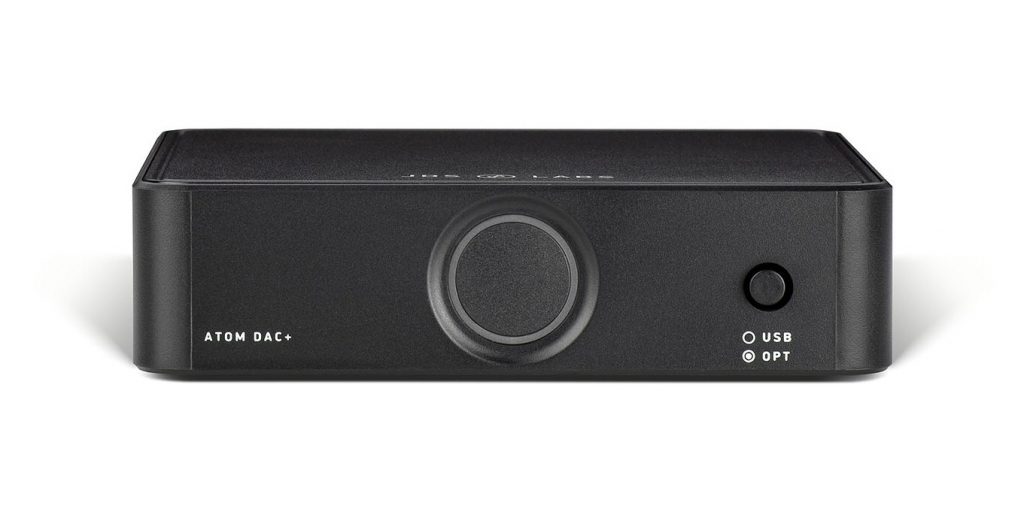
Scrapping our Plans
We did not have to release Atom DAC+ today. We secured an extra lot of AK4490s earlier this year to build more of the original Atom DACs. As Atom DAC+ came together, we took a risk and parted ways with our AK4490s in order to help a fellow manufacturer.
JDS Labs has also been investing in IP to minimize our reliance on proprietary ICs since well before the global pandemic and AKM shortages. USB and S/PDIF controllers are key to high performance audio and we find that our goals increasingly demand custom software development. Exceptional hardware goes hand-in-hand with code. Replacing proprietary silicon with software reduces cost, and in many cases, presents opportunities for performance optimizations. Alas, the AKM disaster threw a wrench in our plans, as we were still targeting AKM DACs in late 2020. Nearly a year of firmware development is being set aside for now.
Swapping the Chipset
Atom DAC+ uses the same XMOS XU208 USB stage and dedicated AC power stage as the original. The left-hand side of the board is unchanged. Only the AK4490EQ and analog output stage have been replaced by an ES9018K2M and a carefully tuned, six opamp I/V converter. The -K2M variant has no headphone output driver, so like AK449x chips, it requires a high-performance differential-to-single ended output stage. We tried ESS’s reference circuit and built something better.
ES9018 has some unusual characteristics. Its differential outputs are each 806 ohms +/11%, and so it favors I/V conversion at its outputs rather than a more compact voltage conversion circuit. We prototyped several I/V converters and observed average performance using the default ES9018 register values, around 90dB SINAD. Optimizing the schematic was only half the battle. Tuning the THD harmonic compensation registers and evaluating each component of the output stage looked something like this:
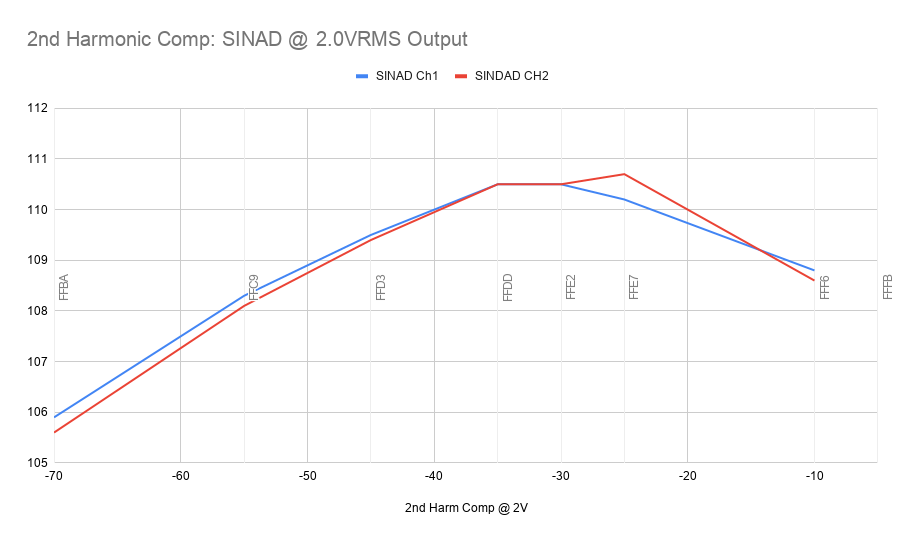
The trick is, optimal harmonic compensation values for ES9018 change with the smallest changes in hardware. At one point, I measured a 6dB drop in SINAD due to a different brand of resistor in the output stage. Same value, same tolerance, same composition, but worse performance. Maybe I goofed the solder job, or maybe there’s something to ponder here with respect to subjective experiences vs. objective performance. At any rate, the register compensation values above are inapplicable to any hardware except for a final production Atom DAC+.
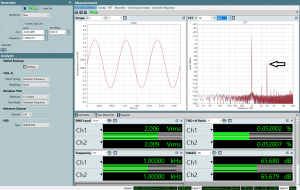
The ES9018’s THD Compensation registers expose an interesting option. By leaving 2nd harmonics optimized and boosting 3rd harmonics, the DAC approximates a tube-like sound. This is not something I encourage, but it’s an interesting experiment for those curious enough to try firmware v2.1.2 [Updated link 17-Mar-2022]. The difference between SINAD of 65dB and 110+dB is much smaller than you’d think.
Performance
| Atom DAC | Atom DAC+ | |
| Frequency Response, 20Hz-20kHz | +/- 0.15dB | +/- 0.12dB |
| SINAD @ 1kHz, 20-22.4kHz |
110 dB | 112 dB |
| THD+N, 20Hz-20kHz | < 0.0008% | < 0.0004% |
| SNR, 20Hz-20kHz | > 115 dB | > 117 dB |
| IMD CCIF 19/20 kHz -6 dBFS | -104 dB | -111 dB |
| Noise, A-Weighted | -109 dBu | -109 dBu |
| Dynamic Range, AES17, A-Weighted | > 117 dB | > 120 dB |
| Linearity Error -90 dBFS | -0.06 dB | -0.01 dB |
| Crosstalk -10 dBFS 100K RCA | -104 dB | -104 dB |
| USB Jitter Components 12kHz | -124 dB | -131 dB |
| Maximum DAC Line-Output, 100K | 2 VRMS | 2 VRMS |
| PCB Stackup | 4 Layers | 4 Layers |
Atom DAC+’s MEMS oscillators run at twice the frequency of the original in order to fully support the ES9018 (was 22.5792/24.576MHz, now 45.1584/49.152MHz).
Firmware Features
Atom DAC+ ships with our latest firmware improvements, tagged v1.8.2:
- UAC2 with UAC1 fallback* is now standard
- Connection to Android and iOS Devices no longer require a USB hub
- Resuming from auto standby is now instant and free of transients
*UAC2 w/UAC1 Fallback retains future firmware update capability. UAC1 fallback is activated when using a USB 1.1 hub or isolator. This method means you can connect to any operating system with UAC1 support (yes, PS4/PS5, and even Win XP and Win 7). Custom UAC1 cables will be available at jdslabs.com in the coming weeks [Added link].
If you plan to connect to a PS4/PS5, you may install optional firmware v1.8.4 to lock volume to 100%. For more information and installation guidance, please see Custom Firmware Builds.
Special thanks to Rick for rapidly adding ES9018 support to our codebase!
** Warning: Do Not attempt to install Atom DAC+ firmware onto an original Atom DAC. While there is no risk of bricking the DAC, the AK4490 and ES9018 chips require different initialization routines. **
Availability
Atom DAC+ is In Stock at jdslabs.com today. For those who placed a backorder reservation for Atom DAC over the past three weeks, your order has shipped with a free upgrade to Atom DAC+.
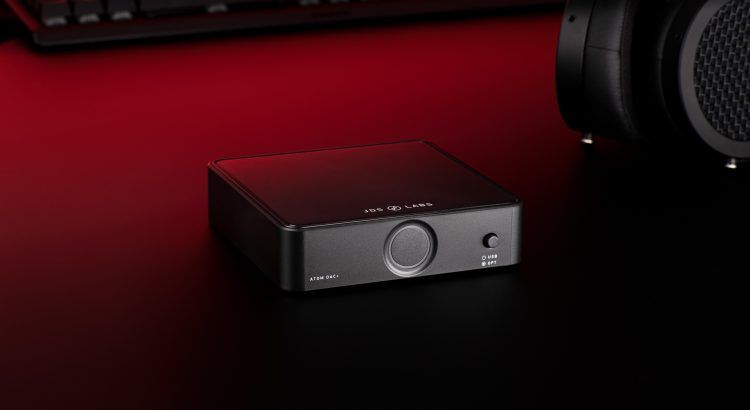
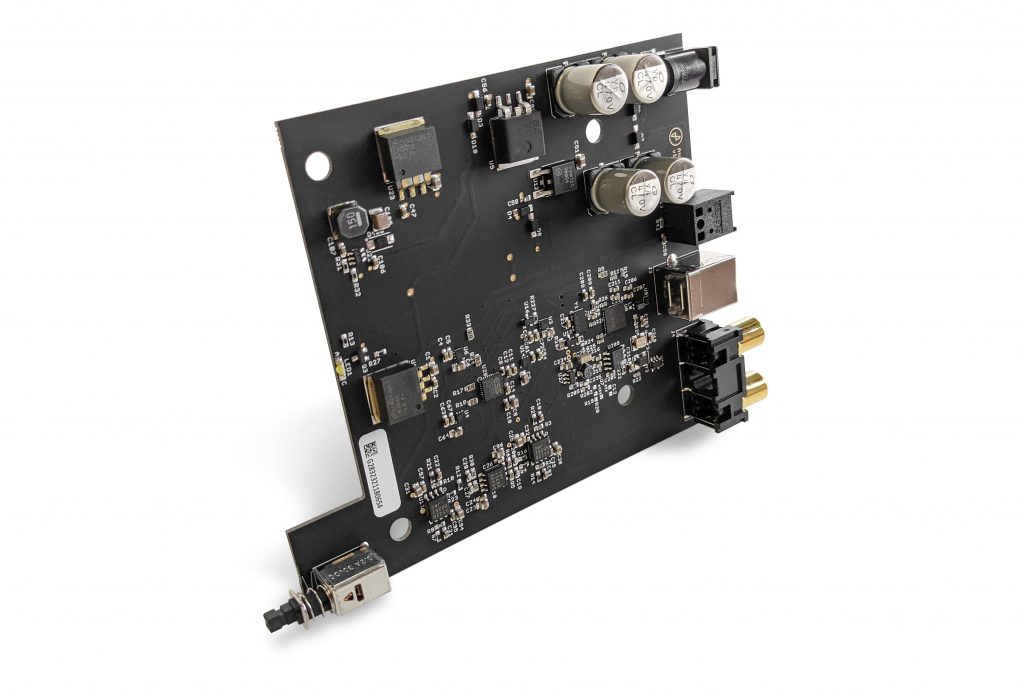
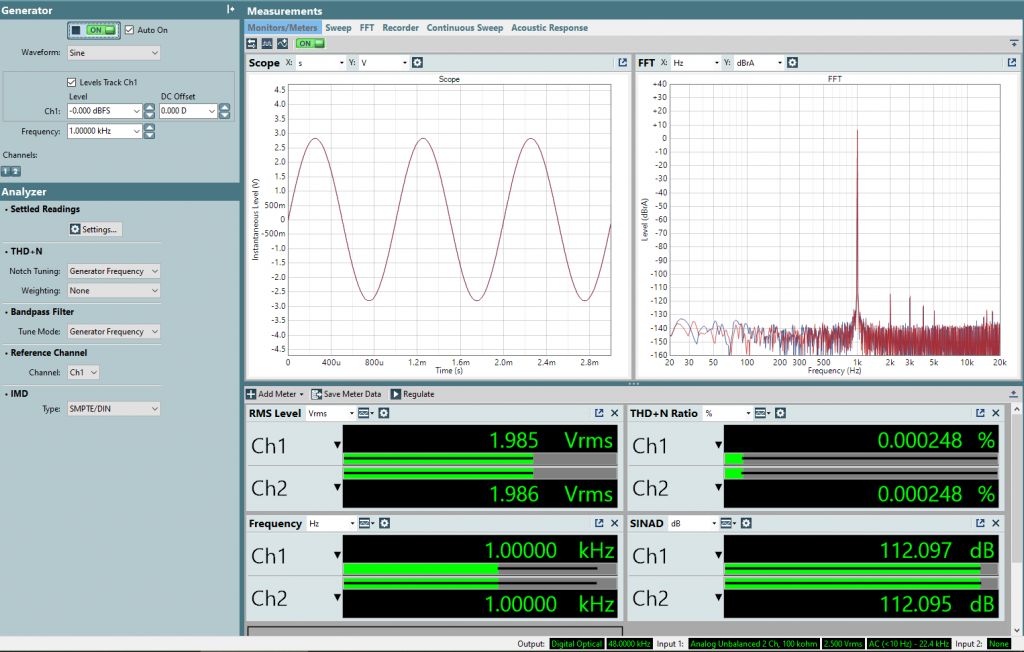
Congratulations on this amazing product – you managed to make a product that performs better than the original in every way and added an optical input for only $10 extra. This is not even taking into account rising costs of pretty much every single component over the last year and a half.
One question – I know that some of your fellow manufacturers have cracked the code of UAC1 fallback not needing a USB isolator or USB 1.1 hub for the PS4/PS5. Any chance this may be possible in the future with the XMOS implementation?
@Boris – We’ve spent a few weeks investigating various UAC1 fallback methods. PS4/5 detection has not been ruled out, but first I want to try something a bit different to maximize compatibility.
I got scared seeing an improved atom dac show up after just buying the standard one last week, then I saw the last paragraph. This is a nice surprise!
I just ordered one today. Glad to see I’ll be receiving the new and improved version.
Plz consider some product in future..in your product list..
1. Balance dac ( to connect active studio monitor which comes with only balance input).
2. Speaker amplifier for passive speakers.
Plz do some product for speakers only.
Amazing achievement! Looks really nice indeed.
Also looking forward to a low cost ($200 – $250) DAC+Amp combo device that can save me from cable management headaches. It would be nicer if such device could have balanced line output (using 6.35inch jack is fine, similar to what most audio interfaces is using) as well, as many people have active studio monitors that accept balanced signal.
thd compensation tuning here looks a little bit hackier than normal though. it seems that the current design is super sensitive to the output stage, based on the story that changing a different brand resistor would lower the performance by 6dB. This may cause some trouble in the future. For instance, if some property of the next batch of resistors from the same brand changes, or if you suffers from supply chain issues so you have to use resistors from other brand, you have to tune those values again. In those cases, it would be very difficult to provide existing customers with consistent firmware updates. thd compensation tuning for a sensitive output stage may also suffer from thermal drifts, as has shown in some other ess based products.
Thank you all!
Yes, 9018 is sensitive to output stage changes. It’s also weakly documented that ESS changed the differential hardware output impedance spec in a silicon change back in 2013-2014. During development, I tested ICs from 2013, 2014, 2020, and 2021 to gather a better sense of variation. The 806R +/-11% spec has an insignificant impact on THD. The biggest impact is on output voltage: Different batches of ES9018s will effectively output 1.95VRMS, while other batches will output up to 2.05VRMS for the same output stage. We have spreadsheets and tuning notes basically boiling down to a single resister adjustment per differential signal to keep the design in spec.
The output stage itself has a greater impact on THD. This all sounds maddening from a design perspective, but it comes down to production logistics. We buy ICs and passives to last for the product lifecycle (well, assuming we forecast correctly). This combined with strict Q/C means the production challenge is minimal.
The 6dB prototyping blunder was most likely a bad solder job–admittedly one I abandoned after 30 minutes of frustration.
> The difference between SINAD of 65dB and 110+dB is much smaller than you’d think.
That’s very correct. there’re other ess based products that offer the same tuning in menu using thd compensation, and most people find it hard to perceive such difference.
On the other hand, it would be very easy for human to perceive frequency-response changes (such as EQ). speaking of which, does the product apply de-emphasis when the spdif signal’s pre-emphasis flag is turned on? it would be nice to have such feature, as some historical recordings in the early 80s are mastered with pre-emphasis on.
@reminisce1989 – Agreed, freq response / EQ adjustments are far more audible than THD adjustments.
Register #6 is at the default value as of release firmware v1.8.2. This is an easy bit change. I’ll add the request to our repo.
EDIT: Done! Please see v1.8.6.
Whoa, what a fun surprise! I’m impatiently listening for the UPS truck, even more so now! The single input on the OG Atom DAC was my only hesitation before hitting the pre-order button but with 2 inputs now I’m sure it’ll work in my setup! 😀
It doesn’t appear to support DSD playback? Are there plans to in the future? Does DSD support require additional circuitry or simple firmware changes?
@Larry – DSD is supported in hardware, so yes, it’s a matter of firmware accommodations to enable DoP, plus licensed drivers for full DSD.
The XMOS UAC2 engine natively supports DoP and DSD. Firmware modifications require verifying DSD pin mappings (DSD and I2S pins are shared), then adding logic to toggle DAC registers between I2S and DSD modes.
Please chime in if you would like us to implement DoP/DSD.
Edit: DoP/DSD is now supported in firmware v1.8.8.
John, thanks for your reply. Lack of DSD would be a deal breaker for me personally because I have a fair amount of DSD material.
Another thing I’d like to see is some sort of of display or LED’s showing sample rate. Because media player software and OS settings are so complex, glancing at the DAC is the easiest way to tell if playback is bit perfect.
Lastly, I’m wondering if there are future plans for components with balanced outputs/inputs?
Thanks
I’d love to see full DSD support! You guys make great performing and looking products!
Working on it this week…
Hey JDS Lab Team!
I’m very excited to see this new atom dac+. You guys seemed to improve the original atom and included spdif input for only like $10 more.
I’m a long time JDS user and I had bought all the original products from you guys, well except for that switcher and EQ thing ( which I will buy soon ). Do you guys have any plans for a new line of products in the (near or distant) future? If possible please let them come with XLR ports :P.
@John – Thank you! XLR is a popular request lately…
Plz make some amp and dac for active and passive bookshelf speakers only.
Hi,
Any chance in a future version of the product you’d switch to usb-c?
@Eric – I’m all for Type C in the distant future, but for now, Type B remains rugged and best value. What are your thoughts?
I’m happy with USB-B on the Atom DAC+, while waiting for USB-C on the premium endgame EL DAC. Any plans for a USB-C upgrade option on that line? Also, if replacing the included cable with a USB-C to USB-B one, is the ferrite bead that comes on the included cable still helpful there?
@Robert – Yes, you should transfer the ferrite to any USB cable, whether Type B or Type C. It’s helpful regardless of connector.
For those of us that purchased the original Atom DAC, will you be releasing firmware updates that arose from your AK4490 development work?
@Inmotian – We actually added what is possible to the AK449x firmware before Atom DAC+ was announced. Firmware compiled after March 2021 has “UAC2 w/UAC1 fallback” and improved Android/iOS support:
https://blog.jdslabs.com/2020/08/custom-firmware-builds-for-element-ii-el-dac-ii-and-atom-dac/
Love your guys’ resourcefulness! Switching chips and creating an updated version of the product at the same time was the right call. I was really surprised to get the updated version in the mail with my pre-order.
I am curious. How would users go about trying out the alternative firmware for tube-like sound? I can’t seem to find anything about it on the user manual or the product page. Am I missing something, or has it simply not been released yet?
Thanks again for the upgrade!
Thanks, Daniel!
The “tube-like” firmware .bin file is downloadable from this article only. For installation, please follow instructions towards the bottom of the Custom Firmware Builds article.
Is there any possibility of getting the silent wake-up feature on the original Atom DAC?
I’d like to second Arjun’s question just above about the “possibility of getting the silent wake-up feature on the original Atom DAC.”
It would be really great if JDS Labs would issue a firmware update for the original Atom DAC that allows it to resume from auto standby with no “pop.” Please please please?
@JH – Sorry, this improvement is ESS specific. There is no equivalent change for the AKM version.
Quick question. I’m a big fan of HeSuVi for gaming and was wondering is it possible to have a custom version of the firmware that would make the dac show up as a 7.1 device in windows? It would make setting up HeSuVi so much easier than the current faffing around with VB-Cable and audio repeater.
@Haze – This may be possible, although I’m not sure of the implications of the unused channels.
I don’t think that would work at all for the intended use-case. The purpose of the dummy device is to trick software into outputting surround channels, which are then convolved to stereo and piped to the real output device. Atom DAC doesn’t have anything like the DSP capability it would take to do this natively and HeSuVi wouldn’t know how to take advantage of it if it did. I just use the Atmos headphone app with EqualizerAPO, personally.
I think it would work because the way HeSuVi simply adds multiple APOs that do the process like you said of taking all surround channels the software outputs and convolving to simply the 2 stereo channels. Even if the output channels were unused dummy ones, it’s not important to take advantage of HeSuVi’s surround capabilities. All the DSP is done in windows. This would make a dummy device unnecessary, and is I believe HeSuVi’s recommended configuration for those who have hardware surround devices.
@John – I second @Haze’s request if it’s trivial to do. Full disclosure, I don’t have a JDS Labs DAC (only an atom amp) but I would certainly pick a DAC of yours up if you implemented this since no one else has. Would be even better if it would be a 8 channel device for windows but still do 2 channels only when communicating to the hardware directly through kernel streaming/ASIO/wasapi exclusive mode, although this isn’t as important to me.
Hope for DSD support as I have quite a bit of content. Wouldn’t mind topping up for it.
@KWHong: Atom DAC+ now supports DoP/DSD. Please see firmware v1.8.8
When you write “Connection to Android and iOS Devices no longer require a USB hub,” does it mean I could connect my iPhone simply via the lightning to USB 3 Camera Adapter and the supplied USB adaptor?
Also, does it makes sense to use the Atom DAC+ directly with powered speakers? I am currently listening to music with an iPhone6s connected to Kanto iPair5 powered speakers via the 3.5mm output jack.
Thank you kindly
@Jean-François – Yes, you may connect using the USB 3 Camera Adapter. This direct cable is also a good option:
https://www.amazon.com/MeloAudio-Compatible-Controller-Electronic-Microphone%EF%BC%8C5FT/dp/B07FLWN6G4
Yes, we use Atom DAC+ directly with speakers just fine.
I got my Atom DAC+ from DeskHero about a week ago and the sound is fantastic. They really added unexpected finesse to my speakers.
Has anyone tried the 1.8.3 “tube-like” firmware? If so, what are your thoughts vs. the default firmware?
Hi all. New Atom Dac+ owner here. Just tried the 1.8.3 “tubey” firmware – I don’t think it sounds tubey. There are some differences vs default; the soundstage is more closed-in (between the speakers rather than beyond the sides). Also, leading-edges and transients are dulled. I prefer the clarity of the official firmware.
I’m not using headphones. DAC is connected by optical to a Sony X90J AndroidTV, into Audioengine A5 powered speakers. FWIW, the 1.8.B firmware sounds best here with the device volume control disabled (i.e. DAC at full line-level output). Bass is stronger vs the TV controlling the volume. Optical sounds indistinguishable from USB. FYI, USB works fine from the TV except when I rebooted TV, it created some mad electronic noises before the OS reloaded.
Happy one year anniversary for the new Atom+ DAC! As I’m currently using my Galaxy S9 as a DAC along side the Atom+ AMP, I’m hunting down specs and particulars regarding the S9 DAC, output voltage, etc. If I find the Atom+ DAC is a clear upgrade, it will be on my radar as an upcoming purchase.